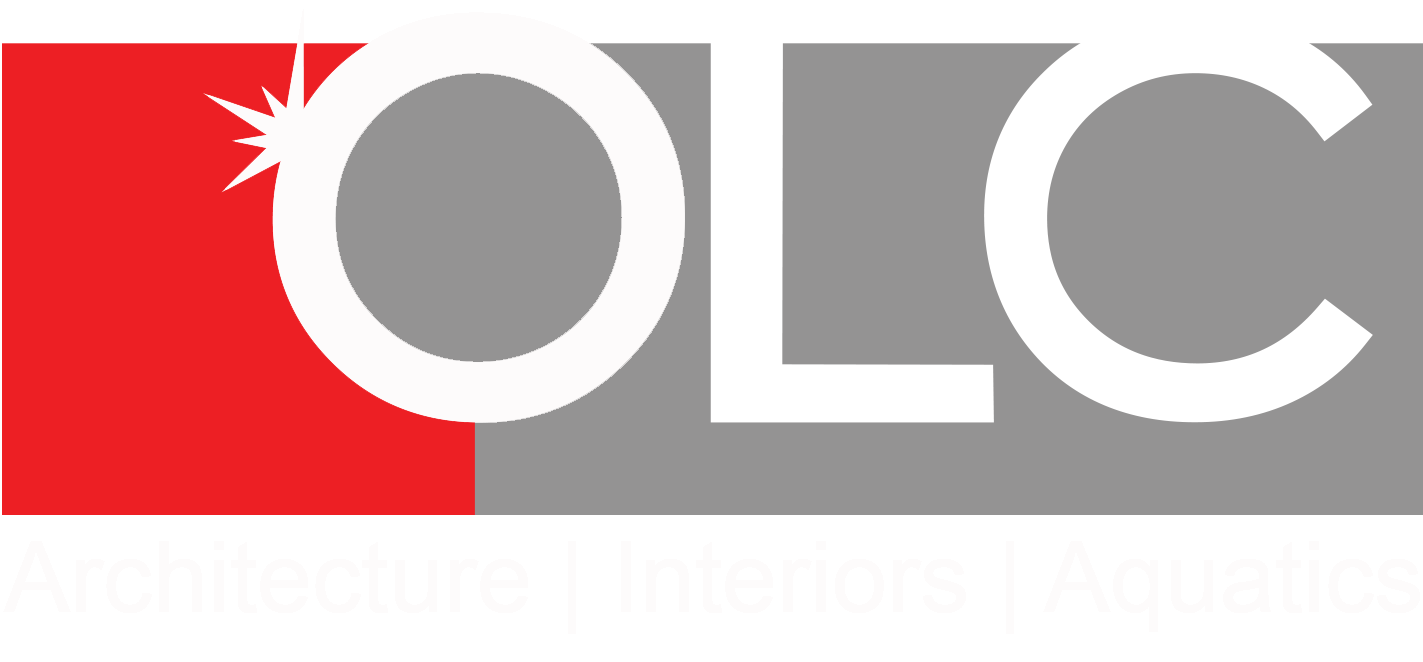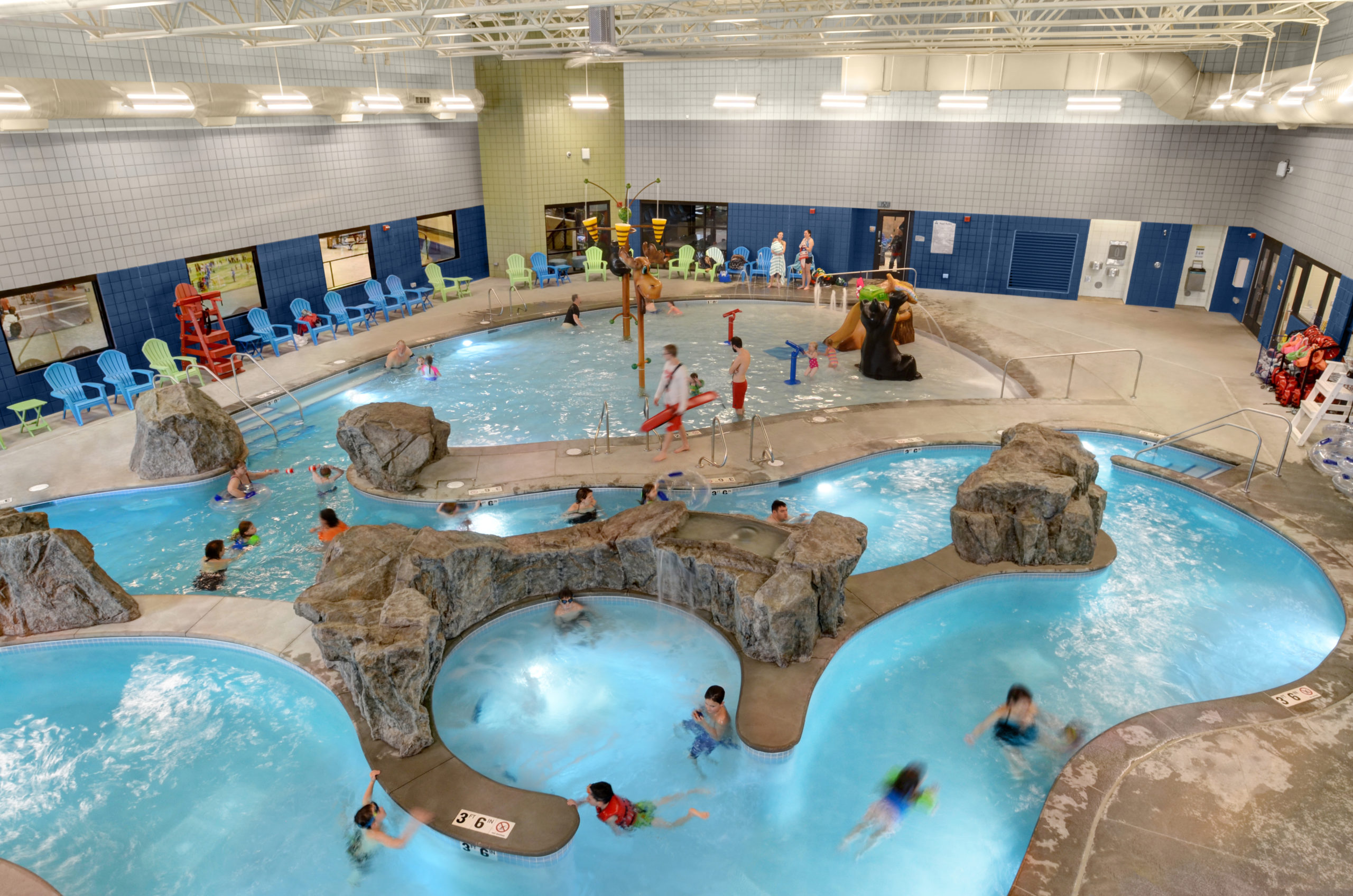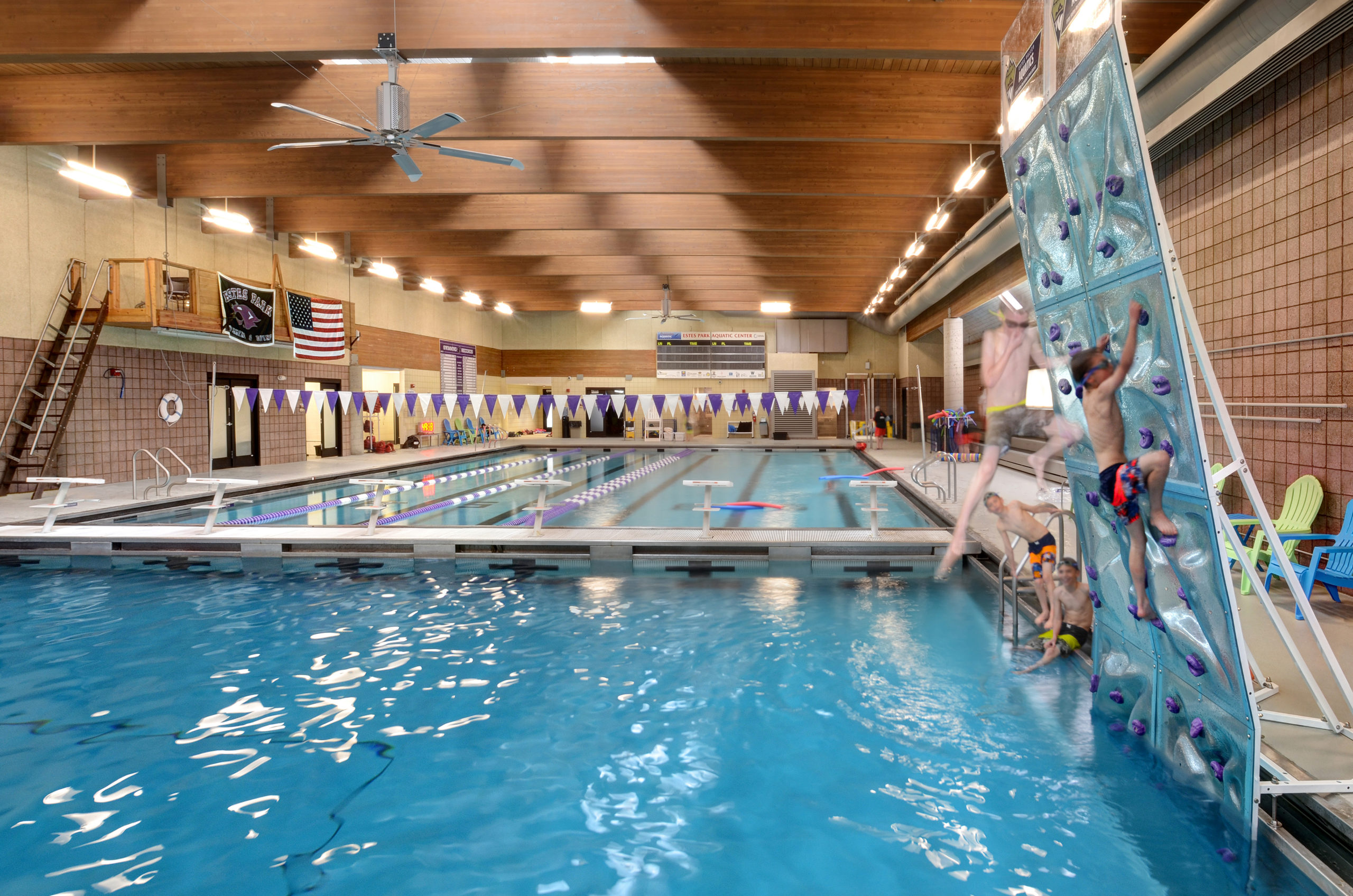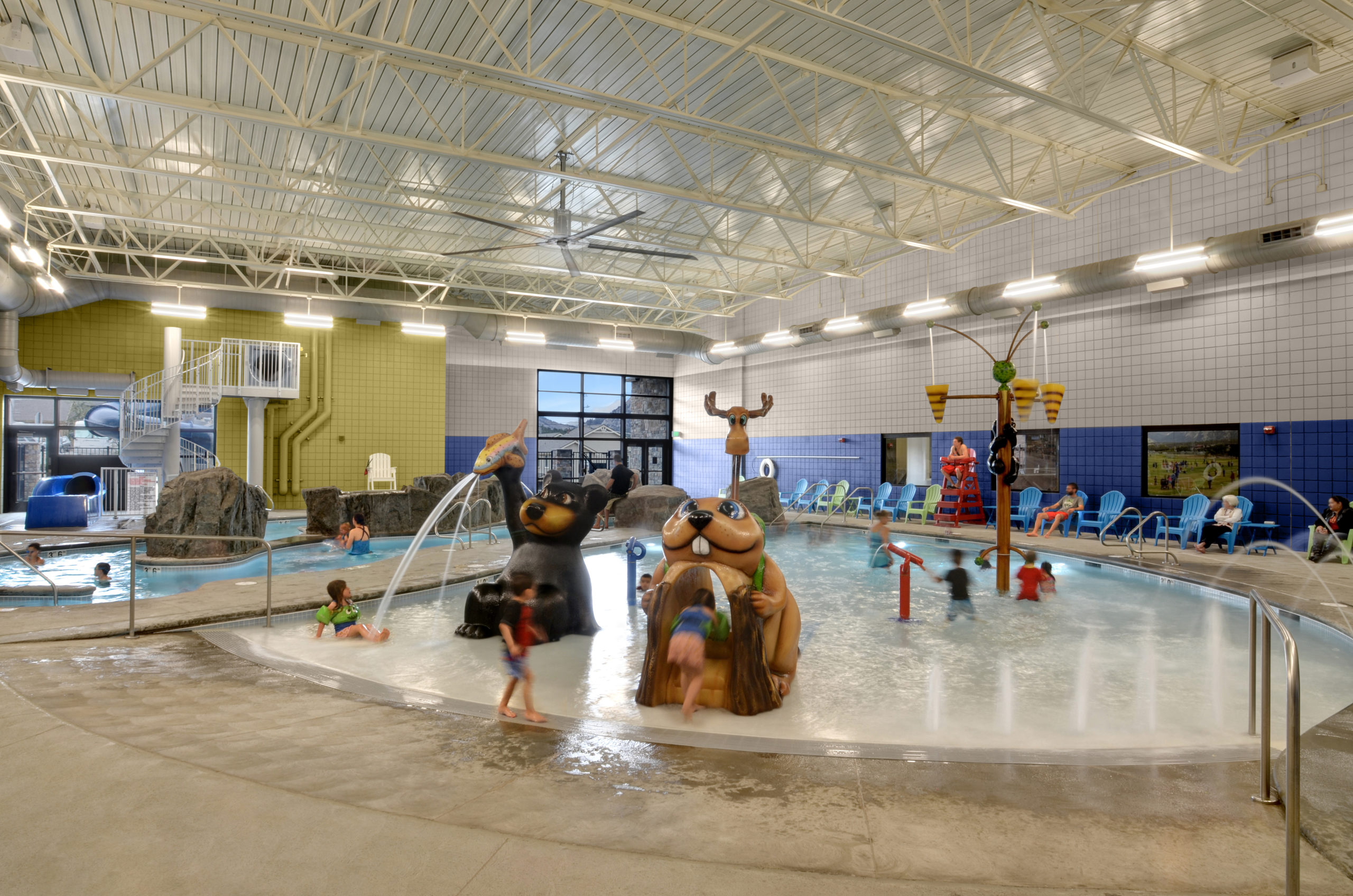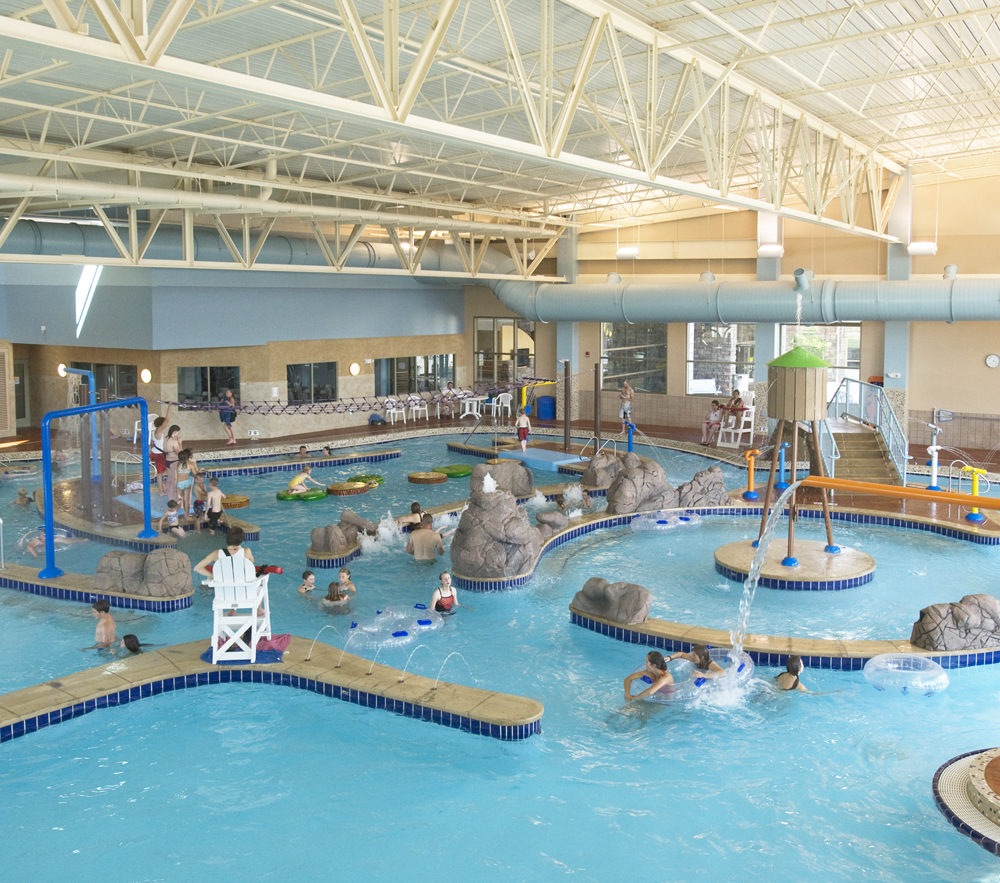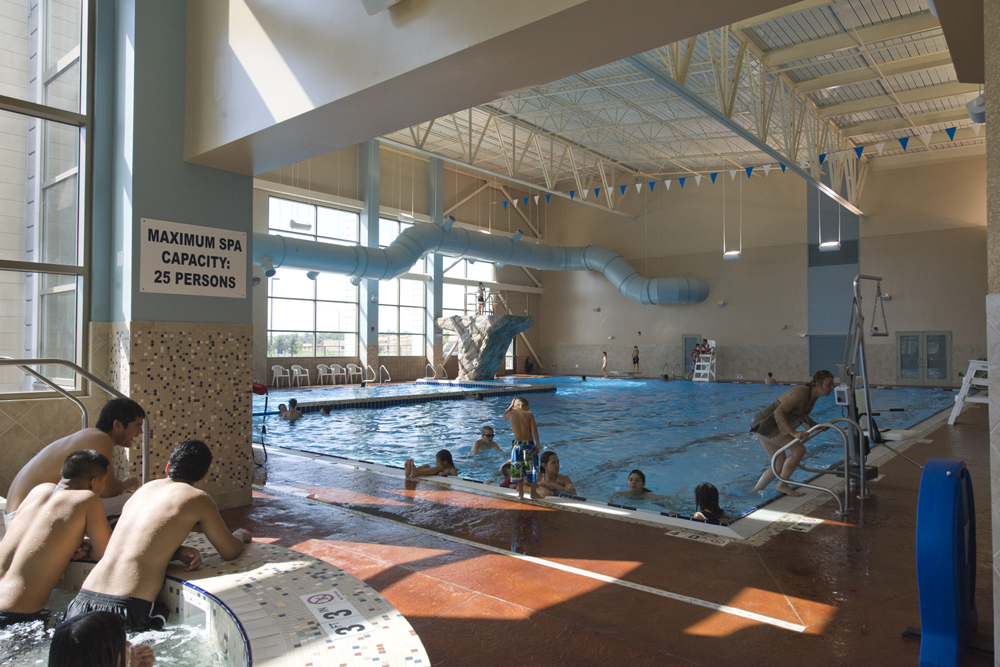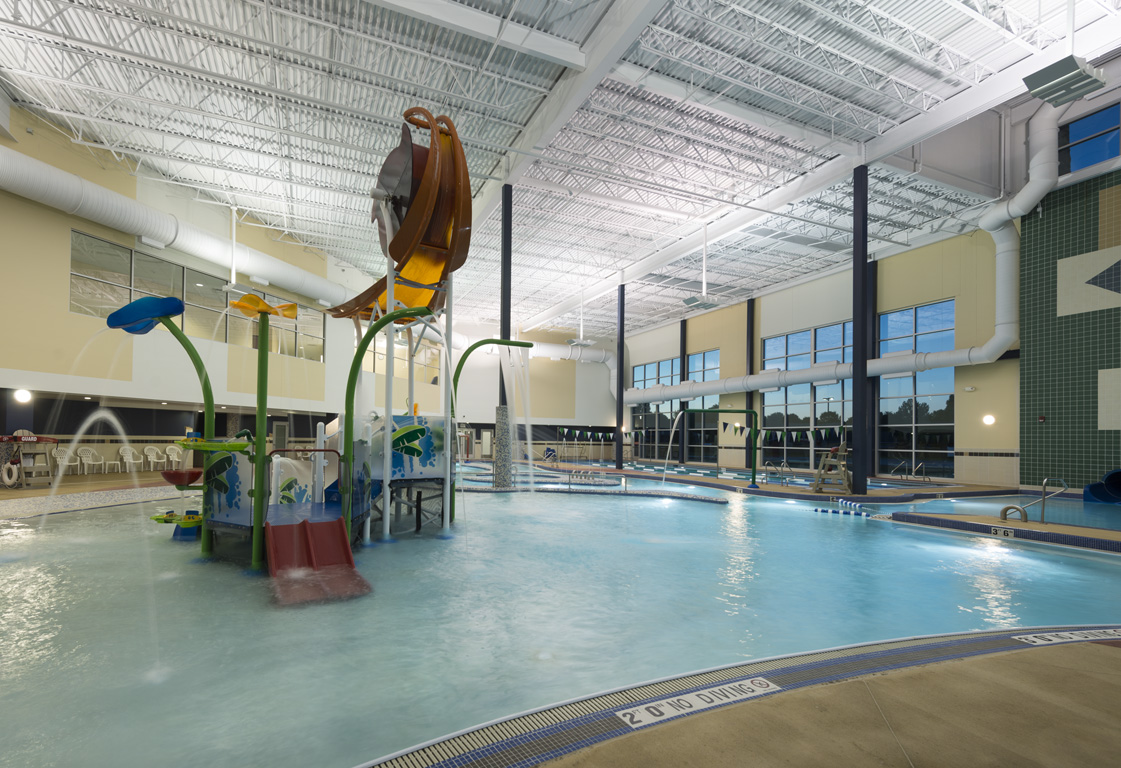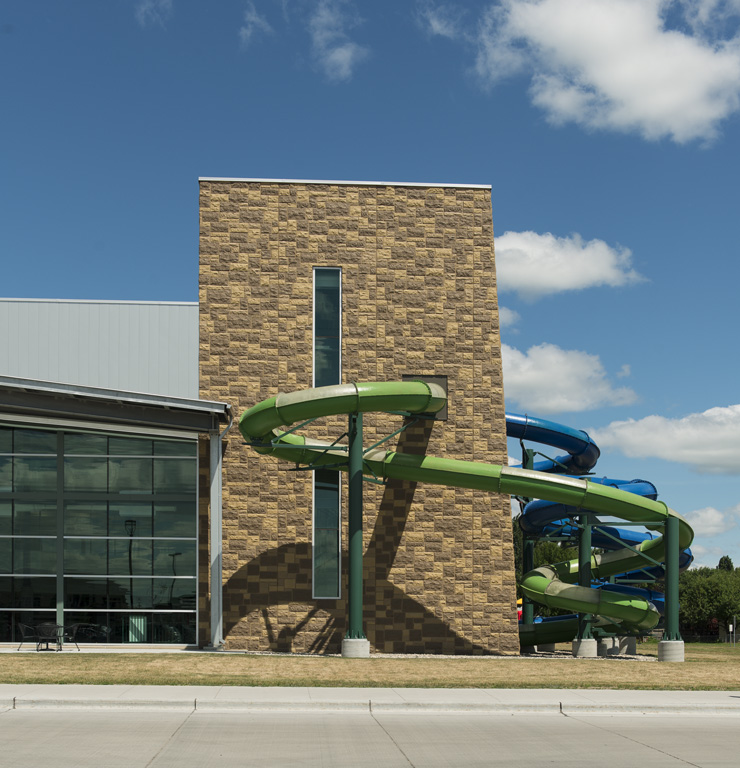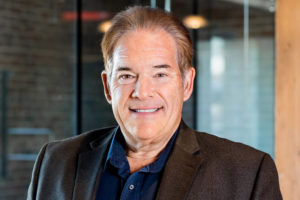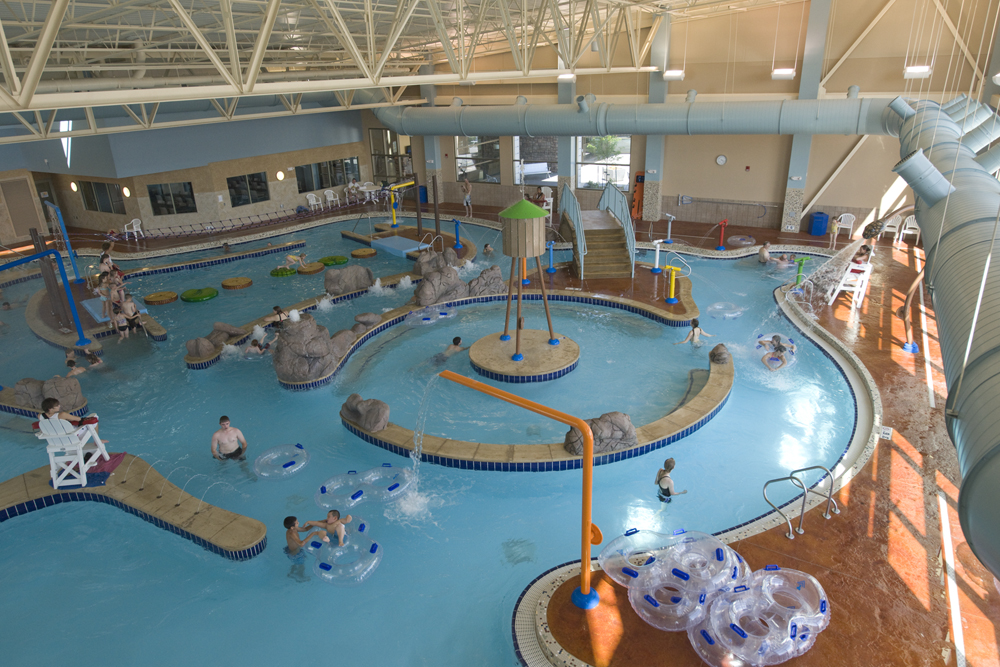
14 Feb Indoor Pools That Pack a Punch
A Series of Life Changing Design pt. 7
Beyond the brick and mortar of a Community Center, and often hidden from the naked eye lay elements of the building when designed properly; make the difference between having an experience of confusion and monotony, to one of pure joy and invigoration. This ongoing blog uncovers the fundamentals of several make or break principles of facility design that when implemented by an expert, will provide your users with an incredible experience for decades to come. The tip of the iceberg of today’s subject is the complex world of swimming pool layout and natatorium design.
7. Indoor Pools That Pack a Punch
When I was a young lad growing up in a small town in Iowa, the local YMCA offered the only option for fitness and recreation within a 100-mile radius. It was the only game in town, and as a result was bursting at the seams with activity. But like so many other fitness and recreational facilities of that age gone by, it left much to be desired in the way of offerings. An indoor pool was a much appreciated and frequented amenity that most users within the service area had never enjoyed until the ‘Y’ came online. Yet, the natatorium was a dark box devoid of windows, housing a 25-meter lap pool, and that was pretty much it. Never-the-less, this modest pool generated much excitement in the community. However, it’s not headline news that today’s users, even in the smallest of communities, have much higher expectations.
It’s no secret if a facility is to have an indoor pool, it is the costliest element to construct, maintain, and operate. Therefore, when considering a new facility, renovation, or addition, the greatest care must be taken in engaging the community to determine the true programming requirements, and crafting a design response that best satisfies all the needs in the service area with the funds that are available. Oftentimes, a pre-existing feasibility study has answered many of these questions, but if such a study is not in place, the development team will be compelled to reach out to the end users in every way possible to get the programming piece right.
In this blog, we will talk about defining a target audience(s), identifying need, crafting a multi-use design that responds to the greatest number of user groups, zoning, careful allocation of funds, theming and amenities within the natatorium that can add punch without breaking the bank.
So, what is a Target Audience, and why is this important? The audience(s) are those user groups that the Team would respond to in order to satisfy the largest priority needs of the service area. For an indoor pool, these groups could include: Competitive Swimmers, Seniors, Families/Toddlers, Teens, Lap/Fitness Swimmers, Aqua-Sports, Learn to Swim, and Diving, to mention a few. Sometimes, the target audience could be a pretty wide one. The mission statement for the pool could declare “We want to be all things to all users”. This could certainly be the case for a facility serving a rural area like my childhood YMCA where there are no other providers nearby. In some cases, communities or agencies have existing pools within their system with which they either don’t want to compete or provide redundant amenities. This dynamic could begin to narrow the audience and shape the conversation in a completely different way. Staff and stakeholder meetings along with surveys can go a long way to identifying the audience(s), and pin pointing need, but in every case, a custom-tailored discovery phase should drive the programming discussion, which in turn serve as an outline for the allocation of funds. The other part of the equation are the questions “How do we select elements, and bodies of water that not only respond to the prime target audience, but also provide multi-use potential? How do we keep the natatorium occupied during all open hours?” A common example of this would be a lazy river that is burgeoning with water toys for the youth that can be ‘dialed back’ and used for therapy swim or resistance walking during ‘off peak’ hours. Having this sort of mind set regarding all bodies of water that are eventually implemented will provide offerings that both exceed the programmability of the pool, but also drive the operations piece of the equation upwards.
As the process unfolds, a couple of big picture questions will quickly emerge such as:
-
- What bodies of water do we need?
- Is there need for competitive, leisure and fitness aquatics? There is a whole subset of questions regarding competitive swim if it’s determined that this use will make the final cut for the project.
- Will we have leisure swim? If the answer to one and two above is “ yes!” then another long list of questions emerges. Will we need to separate these functions in different rooms? Will we host meets? How will spectators access the seating areas? Will we need team locker rooms? Will we shut down the Leisure Pool for meets? The list of questions and answers begins to go on and on.
- Will we partner with a hospital or other healthcare provider to offer fitness or rehab classes? Discussions of water temperature, hours of operation, and combined/non combined systems takes place. Can we use a warm water therapy pool for Learn-to-Swim classes?
- Where do we spend our precious dollars? This is truly the over-arching big picture question.
- If we don’t have enough funding to fully satisfy the need in the service area, which audience has the priority? Can we plan for phasing?
The programming phase can get complicated very quickly. Oftentimes, there are stakeholders that are not in agreement, and discord can prevail. Creating harmony in determining need is both art and science, and mutual satisfaction is never guaranteed. Being able to clearly convey the decision process to governing officials, stakeholder groups, and the community at large through data is oftentimes the best and proven way to explain the programming results. When needed, data is accompanied with a master plan for expansion over the course of time.
What is meant by Zoning? Once the bodies of water are determined, the layout of the natatorium can commence. One of the elementary aspects to the layout and flow of the space is where these bodies of water exist in relationship to each other (Zoning). This is especially true when considering access to and from the locker rooms, and the inter-relationships of target audiences. Some key considerations are:
-
- Placement of swim team locker rooms if incorporated.
- Quick access to senior/rehab amenities from the locker rooms.
- Separation (or integration) of lap and leisure swim components.
- Separation of user groups by anticipated age range.
- Combination or separation of bodies of water by use, water temperature or age range.
- Visibility for Guarding.
- Placement of the pool office.
- Spectator seating access and location.
- Party/Classroom access and location.
- Multi-purpose potential vs ‘Single Use’ amenities.
So how do we pack the biggest punch given all these considerations? How are the precious dollars entrusted to the Team utilized to best serve the needs of the end users? Through intense scrutiny of every dollar invested. But examples speak louder than words, so below are some vivid ones:
Targeting the Youth
The Estes Valley Park and Recreation District (Colorado) originally had a competitive lap pool that was constructed decades ago, and that was about it. The District sits high in the Rocky Mountains of Colorado with few indoor recreational offerings nearby. Therefore, the youth and young family audience became a prime consideration for the new aquatics additions in 2017. The project scope included renovations to the existing lap pool, and the addition of a new full-service recreation center. This involved carefully blending the new and the old and providing leisure aquatics amenities the community had never previously experienced. The zero-depth entry pool, lazy river, and water slides are all geared toward the youth of the region, while the outdoor spa is cross generational in nature. Upgrades to the lap pool include refurbishment of the existing diving board, and a new climbing wall that provides additional recreational programming during off peak hours. The play toys, and rock features compliment the mountain environment in a whimsical tribute to the locale and forest creatures that inhabit the region. Efficient planning and cost saving measures allowed the new pool addition to be significantly larger than originally anticipated adding a pronounced punch to the overall facility programming capability.[/vc_column_text][/vc_column][/vc_row]
All Things to all Users
Gillette, Wyoming is the proud home to the spectacular Campbell County Recreation Center. Folks are accustomed to traveling long distances in Wyoming to get to a destination of their choosing. However, when they arrive, there is an expectation that ‘This better be good’, and from the climbing wall to the pools, the facility delivers. Because of the location, the CCRC wanted to be ‘All things to All Users’ when it came to aquatics. The natatorium is divided into two main rooms housing leisure amenities and lap swimming conversely. The leisure pool contains something for all ages including a zero-depth entry pool for toddlers, a lily pad walk and lazy river for the youth, and a vortex for the ‘tweens’ with its social aspects. Twin slide flumes provide an adrenaline rush across the age spectrum for those brave enough to give it a go.
The lap pool is not competitive in nature and appeals to a wide range of user groups. Because the water temperature is somewhat higher than typically experienced in a competitive environment, more uses are possible. Learn to Swim, Exercise Swimming, Rock Diving, and Aqua Aerobics all can occur simultaneously in this truly multi-purpose environment that maximizes programming potential.
Something a Little Quieter.
When the Choice Health and Wellness Center in Grand Forks, North Dakota was conceived, the Mission across the boards was one that reflected the nature of the 11 partners that came together to make the vision a reality. One of the major partners was one of the largest healthcare providers in the region, in conjunction with the local recreation department. The target audience was unique as well as varied with rehabilitation, and fitness playing key roles with a modicum of leisure use. Zoning within the natatorium became very important. The more active uses with a younger audience were required to be remotely located from the medically-based elements. The water toys themselves were also played down and kept at a minimum in order to assure maximum programming potential for the prime audience. It’s all about the right balance.
A Little Slice of Heaven.
A healthcare-based facility may or may not have a very narrowly focused audience. Never-the-less, each body of water can be designed for multiple uses in mind. This warm water therapy pool for example can also be used as a learn to swim area. The kiddies love the warm water, and it saves them from the ‘blue lips syndrome’. In any event, easing back in this pool is like experiencing a little slice of heaven. No geysers, or sprays… just the trickle of falling water from the rocks lulling you into nirvana. This type of experience is not unheard of in public facilities especially when participating in the growing trend of seeking and partnering with healthcare providers.
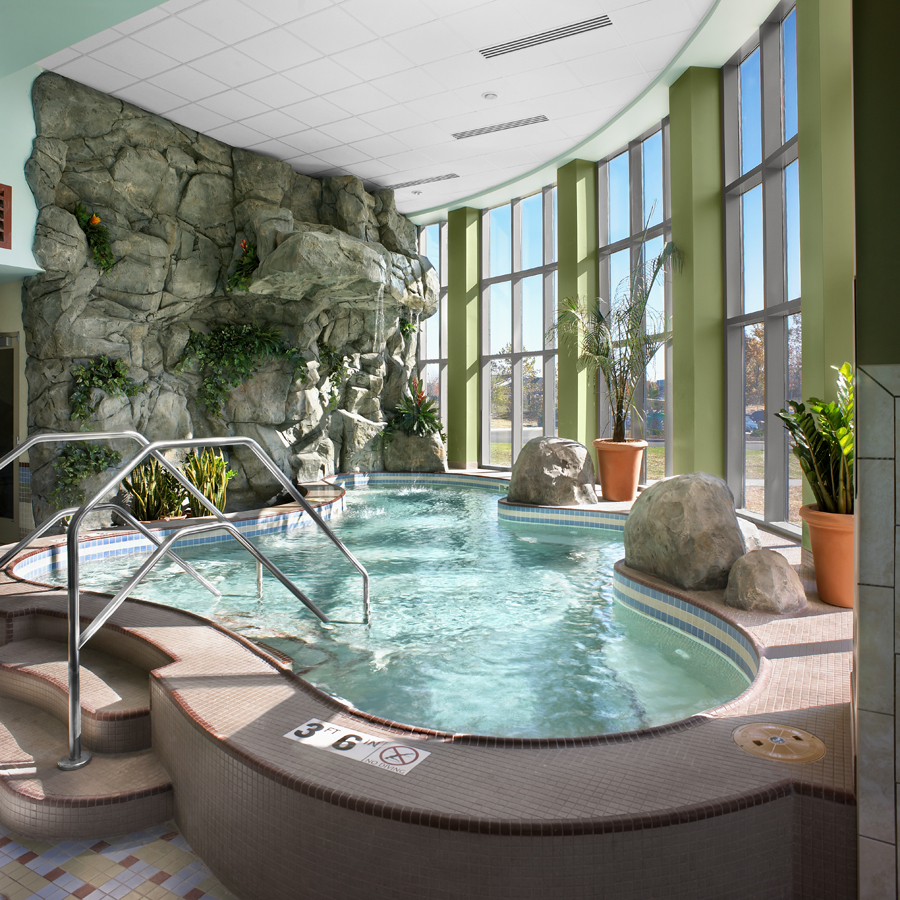

Pack the Punch Over Time
Whether your project is a new build with unlimited funds (like that ever happens), a renovation, or addition, or if you are simply looking for new ways to update your lap pool and increase programming potential, keep your options open for the future of your indoor pool. If you are building new, and don’t have enough funding to construct the entire pool in one shot, plan for expansion. Or limit spending by reducing the number of features that are initially installed and add punch as time goes on. Such an approach is a great way to conserve funds and keep your pool fresh and exciting with the addition of amenities over the course of the years. If you are looking to increase use for your lap pool, consider the addition of slides, or water sports, areas of variable water depth, and single-use elements such as floatables, obstacle courses, and log rolling which provide a new experience and skill challenge at the same time.
